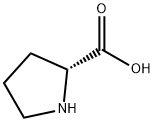D-proline:A member of the D-amino acid family
Sep 19,2023
D-proline(D-Pro), also known as D-hydroxypyrrole carboxylic acid, is an important five-membered cyclic amino acid and an important chiral compound. D-Pro is used as both a splitting agent and a chiral reagent, as well as a chiral intermediate in the synthesis of certain chiral drugs.D-Pro is used as a raw material for the synthesis of optically active pyrrole derivatives, and it shows excellent asymmetric source properties in various asymmetric synthesis reactions.D-Pro is generally found in seeds of flax and loquat, but it has been used in the form of γ-L-glutamyl-1-amino-D-proline and trans-4-carboxymethylated-D-proline. Although D-proline can be prepared by chemical splitting, the maximum theoretical yield can only reach about 50% due to the limitation of the splitting method itself, and thus the market price is very expensive.[2,3].
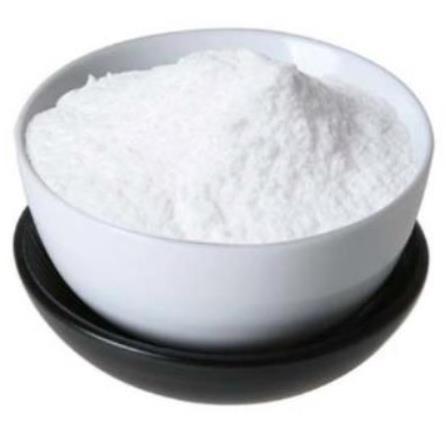
Figure 1, D-Proline
Functions and Characteristics
1, Structural support: D-Proline is involved in the structural composition of proteins and enhances their stability and structure. It plays a key supporting role in certain proteins[4].
2, Drug synthesis: D-Proline has an important role in drug synthesis. It is an intermediate in the synthesis of many drugs and biologically active molecules, including antibiotics, antitumour drugs, antiviral drugs, etc. The special structure and chemical properties of D-Proline make it an important raw material for synthesis[4].
3, Biological activity: D-Proline is biologically active in some biological processes. It is involved in the regulation of certain physiological functions, such as immune response, synthesis of neurotransmitters, etc[4].
4, Amino acid metabolism: D-Proline plays an important role in the amino acid metabolic pathway. It participates in part of the proline cycle and regulates the metabolic balance of amino acids through interconversion with L-proline[4].
Uptake, Transport, and Metabolism
1, Metabolism: D-Proline is metabolised in the same way as other amino acids, mainly by deamidation and decarboxylation[5].
(1), Deamidation
There are two types of co-deamidation: co-deamidation by aminotransferase and glutamate dehydrogenase, and co-deamidation by purine nucleotides.
A, Oxidative deamination: Amino acids in the enzyme catalysed by the removal of the amino acid to produce the corresponding α-keto acid process is called oxidative deamination.
B, Transamination: Amino acids off the amino transfer to the α-keto acid, resulting in the original amino acid corresponding to the keto acid and a new amino acid, this action for the transfer of amino acids.
C, Combined deamination: The combined action of two deamidation modes, whereby α-amino acids are removed from amino acids to produce α-keto acids, is known as co-deamidation, and is a widespread deamidation mode in the body.
(2), Decarboxylation
A, Decarboxylase catalyse the generation of the corresponding primary amine, CO2 release, the reaction requires pyridoxal phosphate, the role of a high degree of specificity, generally an amino acid is only a decarboxylase, and only L-type amino acids play a role.
B, Only the decarboxylase of histidine does not need coenzyme.
C, Decarboxylation is commonly found in microorganisms, higher animal and plant tissues, and decarboxylase is present in liver, kidney and brain[6].
2, Uptake and transport
Gamma-glutamyl cycle: a transport mechanism for the uptake of amino acids by the gamma-glutamyl cycle tissues. On small intestinal mucosa, renal tubules, and brain tissue, the enzyme γ-glutamyl transpeptidase, on the outside of the cell membrane, catalyses the process by which the γ-glutamyl group of glutathione binds to the extra-membranous amino acid and is taken into the cell for release. The glutamyl group is then regenerated into glutathione for recirculation[7].
synthesis
Asymmetric transformation method[8]
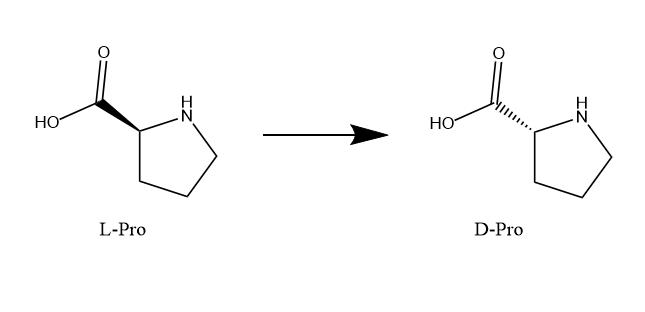
Figure 2, Synthesis of D-Proline
1, Preparation of D-proline-R-tartrate (D-Pro-R-TA):
In a 250 mL three-necked flask equipped with an electric stirrer, a reflux condenser and a thermometer, L-proline (4.60 g, 40 mmol), R-TA (6.0 g, 40 mmol), n-butyric acid 60 mL and n-butyraldehyde 4 m mol were added, and the reaction was stirred for 6 h at a constant temperature of 90 ℃, and small white particles were precipitated out as the reaction progressed. After the reaction was completed, the reaction was stirred in an ice bath for 1 h. The white solid was filtered, washed twice with 10 mL of n-butyric acid, then washed twice with 15 mL of diethyl oxalate, and dried to obtain D-Pro-R-TA (10.14 g).
2, Preparation of D-proline
Take 5.3 g (20 mmol) D-Pro-R-TA dissolved in 100 mL of methanol, placed in an ice bath with stirring and at the same time dropwise addition of 35% of ammonia, adjust the pH 8 ~ 9, and continue to stir the reaction for 1 h. Filtered to obtain a white solid for the diammonium salt of R-T A (can be added to the base to regenerate the R-TA, reuse), namely, R-TA-2NH3. The filtrate was concentrated to dryness in vacuum to obtain 2.15 g of solid, recrystallised with ethanol-ether (7:3, v/v) and dried to obtain 2.11 g of D-Pro.
References
[1]Miyamoto T, Homma H. D-Amino acid metabolism in bacteria.J Biochem. 2021;170(1):5-13. doi:10.1093/jb/mvab043
[2]Kobayashi J. d-Amino Acids and Lactic Acid Bacteria.Microorganisms. 2019;7(12):690. Published 2019 Dec 12. doi:10.3390/microorganisms7120690
[3]Abdulbagi M, Wang L, Siddig O, Di B, Li B. D-Amino Acids and D-Amino Acid-Containing Peptides: Potential Disease Biomarkers and Therapeutic Targets?.Biomolecules. 2021;11(11):1716. Published 2021 Nov 18. doi:10.3390/biom11111716
[4]Pollegioni L, Piubelli L, Molla G, Rosini E. D-Amino Acid Oxidase-pLG72 Interaction and D-Serine Modulation.Front Mol Biosci. 2018;5:3. Published 2018 Jan 24. doi:10.3389/fmolb.2018.00003
[5]Yamada R, Kera Y. D-amino acid hydrolysing enzymes.EXS. 1998;85:145-155. doi:10.1007/978-3-0348-8837-0_9
[6]Fujii N. D-amino acid in elderly tissues.Biol Pharm Bull. 2005;28(9):1585-1589. doi:10.1248/bpb.28.1585
[7]Khoronenkova SV, Tishkov VI. D-amino acid oxidase: physiological role and applications.Biochemistry (Mosc). 2008;73(13):1511-1518. doi:10.1134/s0006297908130105
[8]Radkov AD, Moe LA. Bacterial synthesis of D-amino acids.Appl Microbiol Biotechnol. 2014;98(12):5363-5374. doi:10.1007/s00253-014-5726-3
- Related articles
- Related Qustion
- D-Proline: Biological Distribution and Applications in Pharmaceutical Synthesis Apr 30, 2024
D-Proline, vital in pharmaceutical synthesis, aids in drug creation, especially in asymmetric synthesis and peptide-based development, advancing pharmaceutical research.
- D-Proline accumulation in plants Dec 21, 2023
D-Proline accumulation in plants under stress aids osmotic balance and ROS scavenging, but externally supplied D-Proline may be toxic due to P5C.
- Split preparation D-proline Nov 5, 2021
The price ratio of D-proline and L-proline is quite different. Therefore, D-proline is prepared from L-proline through asymmetric transformation. Proline has a very important meaning.
D-Proline
344-25-2You may like
- D-Proline
-
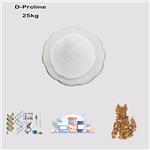
- $0.00 / 1kg
- 2025-12-19
- CAS:344-25-2
- Min. Order: 1kg
- Purity: 98.5%-101%
- Supply Ability: 500kg
- (R)-pyrrolidine-2-carboxylic acid
-
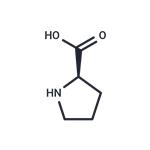
- $29.00 / 1mL
- 2025-12-19
- CAS:344-25-2
- Min. Order:
- Purity: 99.91%
- Supply Ability: 10g
- D-Proline
-

- $0.00 / 1kg
- 2025-12-16
- CAS:344-25-2
- Min. Order: 1kg
- Purity: 98%
- Supply Ability: 20t





